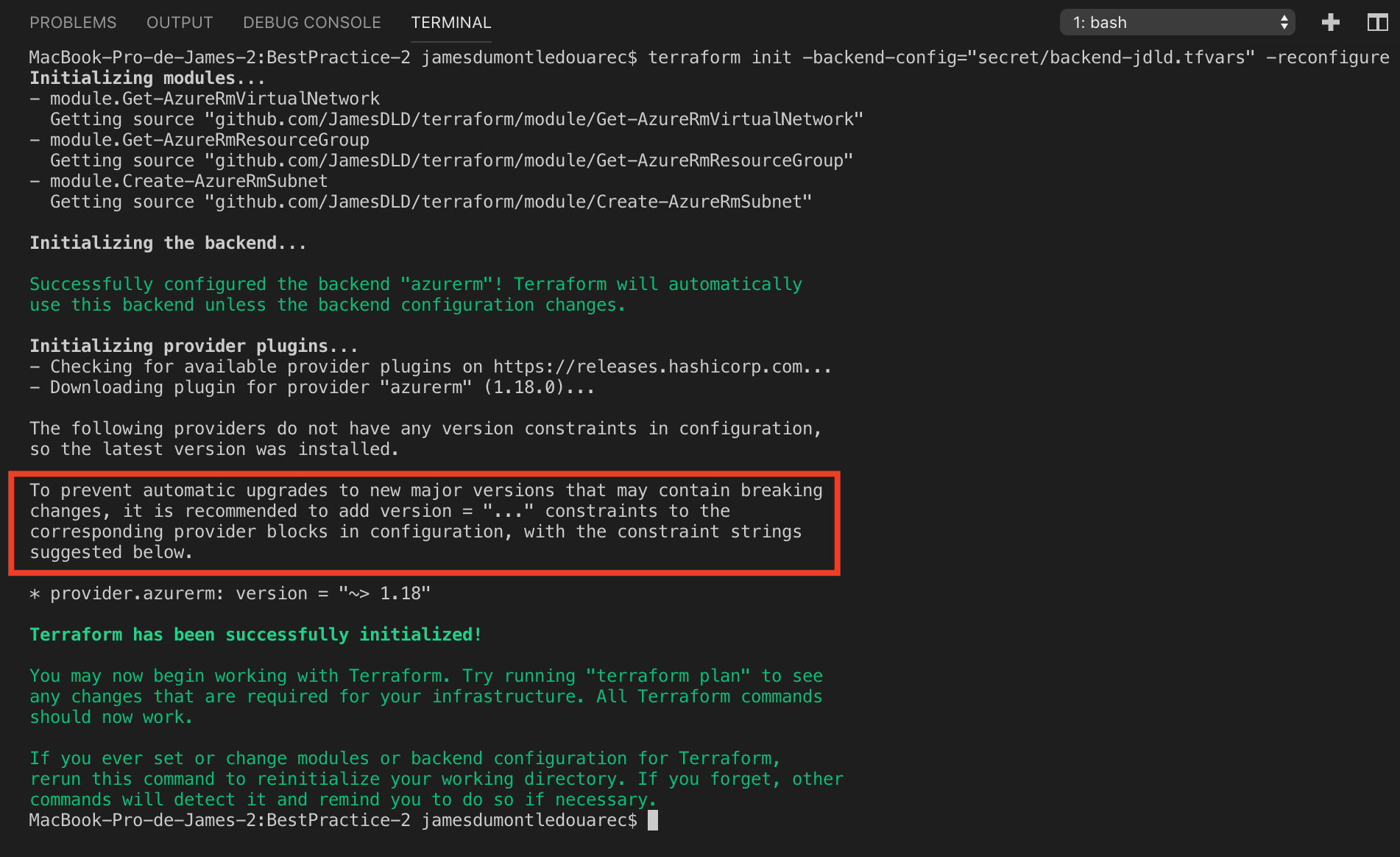Best Practice 2
In this article we will see how to set Terraform, provider and modules version (see this article from terraform.io website to learn more about managing Terraform version).
In this article we will perform the following action :
- Get a Resource Group
- Create a Virtual Network and a Subnet in this Virtual Network
Prerequisite
| Item | Description |
|---|---|
| Azure Subscription | An Azure subscription id |
| Resource Group | An Azure resource group is available |
| Storage Account | An Azure storage account is available and is located in the upper resource group, it contains a container named tfstate |
| Service Principal | An Azure service principal is available and has the owner privilege on the upper resource group |
| Terraform file | Clone this repository and fill in the following files with the upper prerequisite items : Variable used for the Terraform init : secret/backend-jdld.json Variable used for the Terraform plan and apply : main.tf & main-jdld.tfvars & secret/main-jdld.json |
What should we do?
We will create the upper mentioned element using remote backend (see the previous article BestPractice-1 for more information about remote backend).
The Terraform executable file, the AzureRm provider and our modules version will be set as described in the following bracket (also available in our main-jdld.tf Terraform file).
Declare the Terraform required version
terraform {
required_version = ">= 0.12.6"
backend "azurerm" {
storage_account_name = "infrasdbx1vpcjdld1"
container_name = "tfstate"
key = "BestPractice-2.tfstate"
resource_group_name = "infr-jdld-noprd-rg1"
}
}
Specify the AzureRm version
provider "azurerm" {
version = ">= 1.31.0"
subscription_id = "${var.subscription_id}"
client_id = "${var.client_id}"
client_secret = "${var.client_secret}"
tenant_id = "${var.tenant_id}"
version = "~> 2.0"
features {}
}
Specify the module version
module "Az-VirtualNetwork" {
source = "JamesDLD/Az-VirtualNetwork/azurerm"
version = "0.1.4"
net_prefix = "demo"
network_resource_group_name = data.azurerm_resource_group.bp2.name
virtual_networks = var.virtual_networks
subnets = var.subnets
route_tables = {}
network_security_groups = {}
}
1. Usage
This step ensures that Terraform has all the prerequisites to build your template in Azure.
terraform init -backend-config="secret/backend-jdld.json" -reconfigure
The terraform plan command is used to create an execution plan. This step compares the requested resources to the state information saved by Terraform and then gives as an output the planned execution. Resources are not created in Azure.
terraform plan -var-file="secret/main-jdld.json" -var-file="variable/main-jdld.tfvars"
If all is ok with the proposal you can now apply the configuration.
terraform apply -var-file="secret/main-jdld.json" -var-file="variable/main-jdld.tfvars"
2. Analysis
| Description | Screenshot |
|---|---|
The Terraform init highlights our version |
 |
| Check the Terraform init when you remove the version |  |
See you!
JamesDLD